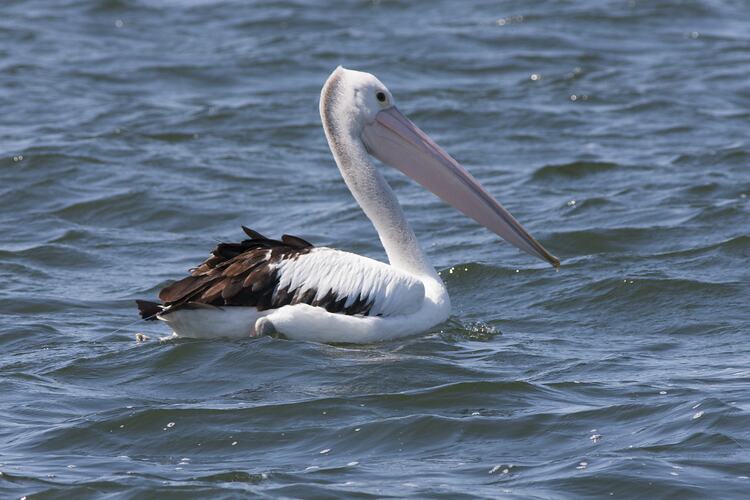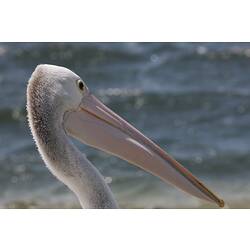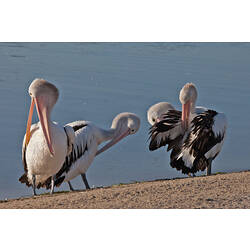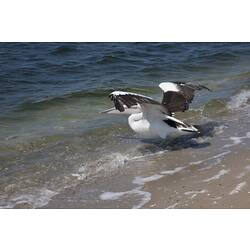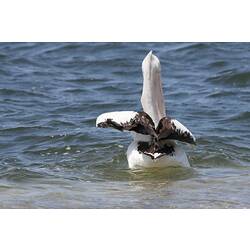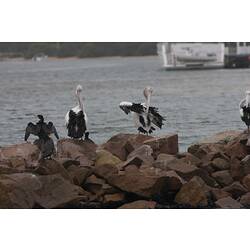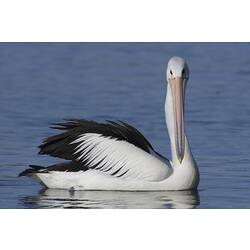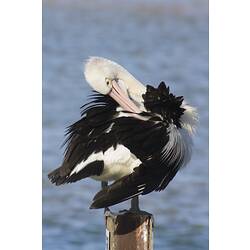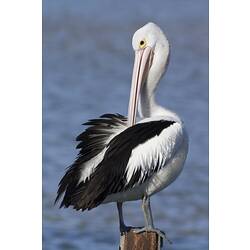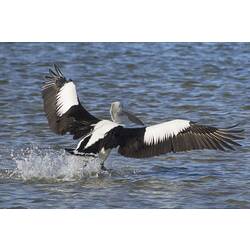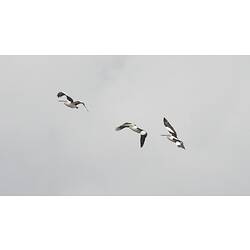General Description
Australian Pelicans are white with a black pattern on the wings and tail. They have short grey legs and webbed feet. The bill is long and pointed with a hook at the tip and with a large deflated pouch on the lower bill. The bill is pale pink and the bill pouch is normally pale pink but becomes red during the first part of the breeding season when birds are courting. Pelicans weigh about 5 kg and the bill to tail length can be up to 1.8 m. Males are larger than females.
Biology
Australian Pelicans mostly eat fish but are opportunistic and will take other foods including insects, crustaceans and young birds. They feed alone but occasionally form small flocks where they help one another catch fish by herding them together. Pelicans nest in colonies near water. During courtship, both the male and female use their bill in a range of displays including 'pouch-rippling', 'pouch-swinging' and 'throwing-and-catching' where they throw an object such as a stick or a dry fish into the air and then catch it again. Pairs make a scrape in the ground for their eggs or trample bushes to make a simple nest platform. The usual clutch size is two eggs. They are the only species of Pelican in Australia.
Distribution
Mainland Australia and Tasmania except western deserts. Highly nomadic.
Habitat
Coastal bays and inlets, and inland freshwater wetlands.
More Information
-
Animal Type
-
Animal SubType
-
Brief Id
A large white and black waterbird with a huge pouched bill.
-
Colours
White, Black, Pink
-
Maximum Size
1.8 m
-
Habitats
-
Diet
Carnivore
-
Diet Categories
Fish
-
Endemicity
-
Commercial
No
-
Conservation Statuses
CITES: Not listed, FFG Threatened List: Not listed, EPBC Act 1999: Not listed, IUCN Red List: Least Concern
-
Taxon Name
-
Common Name
Australian Pelican
-
Kingdom
-
Phylum
-
Subphylum
-
Class
-
Order
-
Family
-
Genus
-
Species Name
conspicillatus
